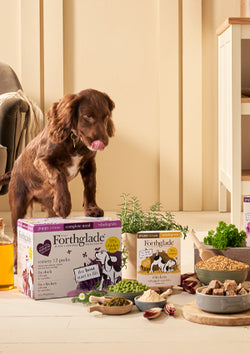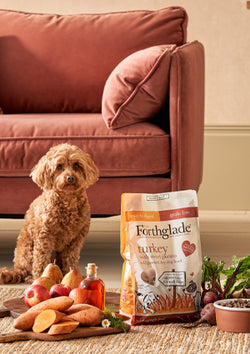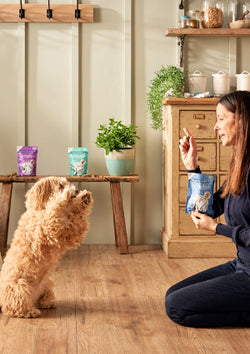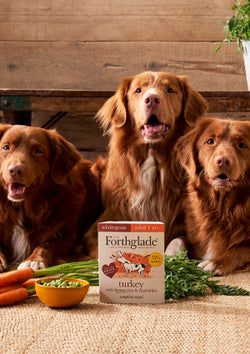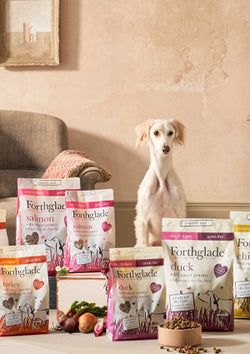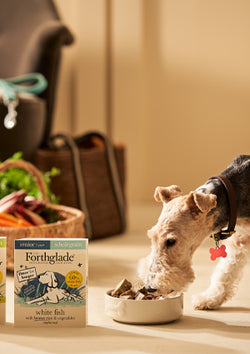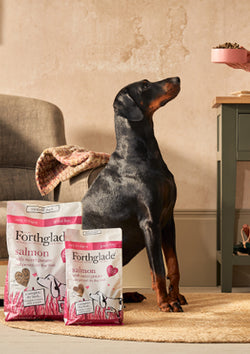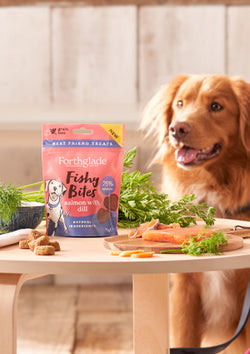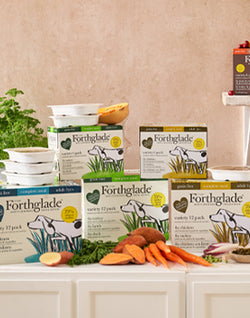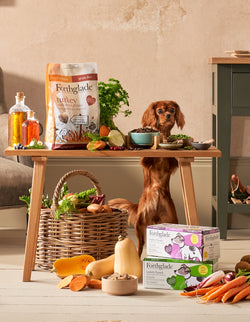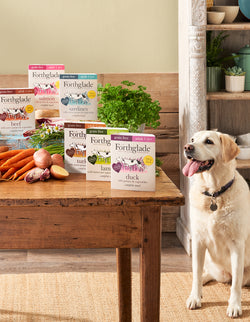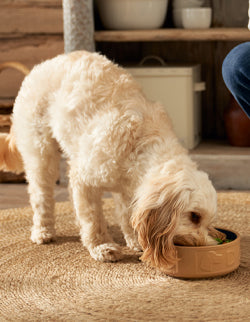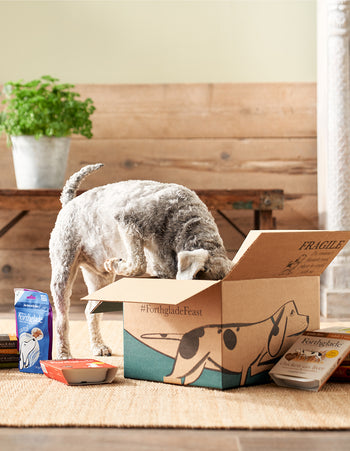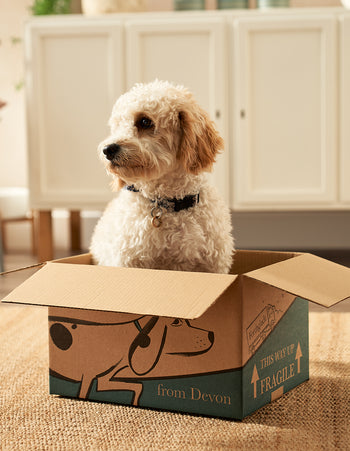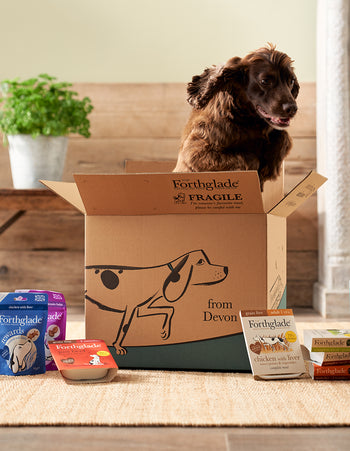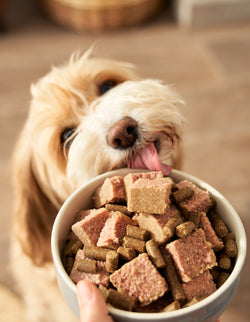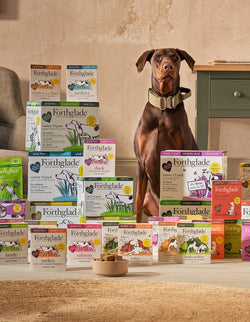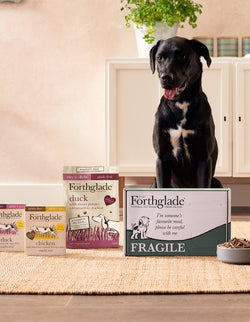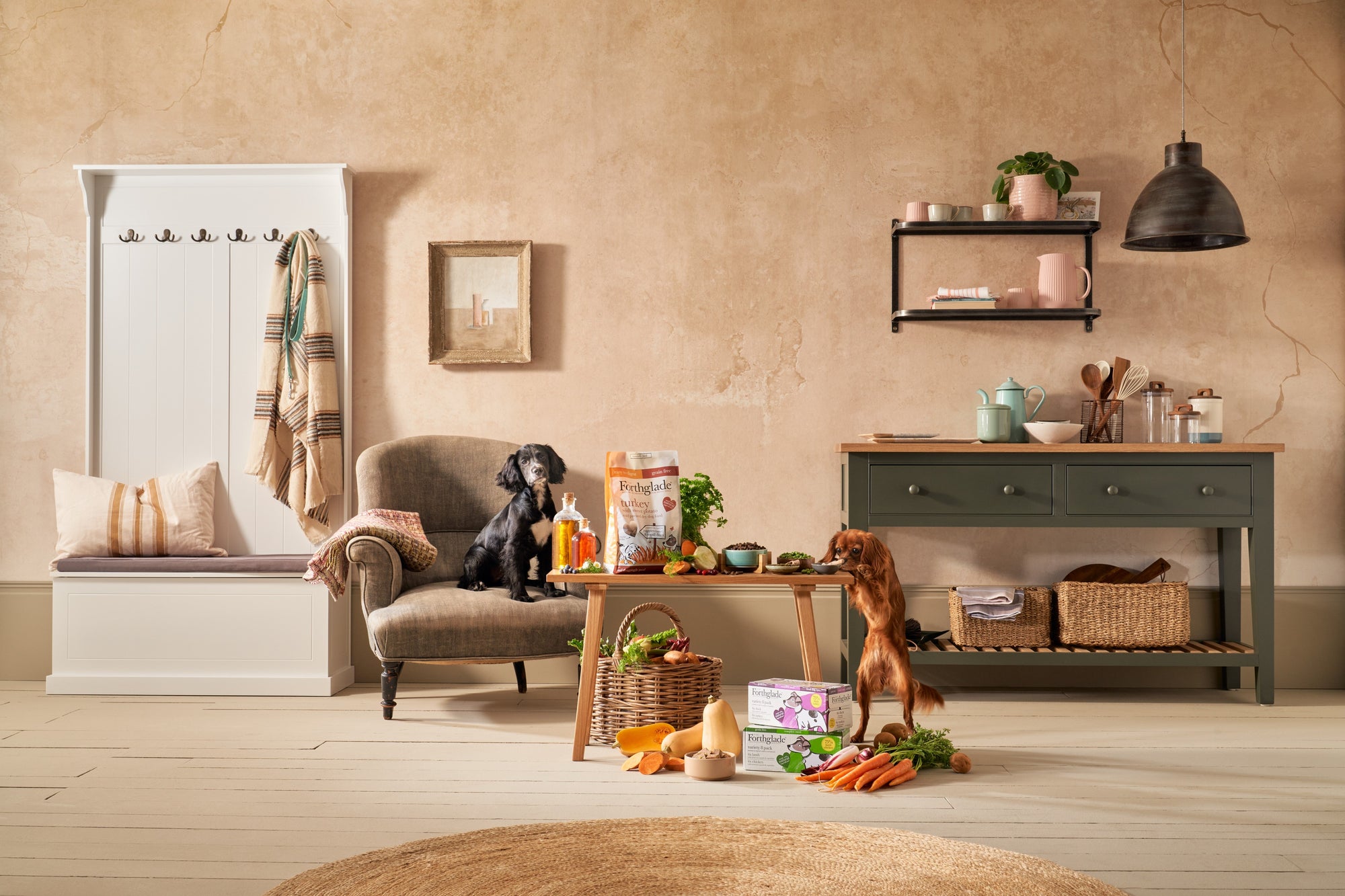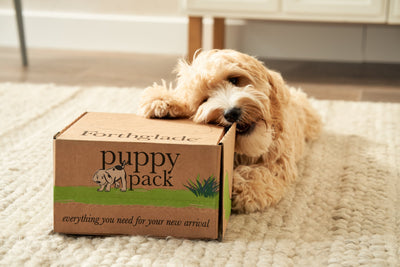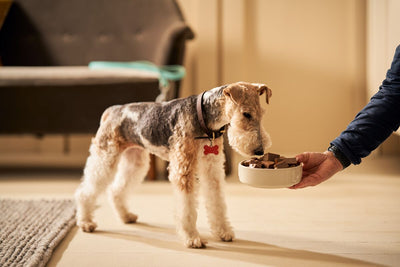As they are well known for saying on Game of Thrones, winter is coming. And even if you’re not a GOT character (or dire wolf) beset by tragedy and drama, it’s easy to feel bleak at this time of year. Dark mornings, dark evenings and cold, wet weather don’t give us the motivation we need to get outdoors, get moving and get a dose of that all-important melatonin.
For some of us, this seasonal gloom can lead to a type of depression known as Seasonal Affective Disorder (SAD). It manifests as fatigue, low mood and social withdrawal, making the winter months even more tough. Research shows that our four-legged friends can also exhibit the symptoms of SAD. We want to make sure you know how to recognise the symptoms, and what you can do to prevent your dog getting SAD this winter.
What causes Seasonal Affective Disorder?
SAD is the result of two opposing hormones – melatonin and serotonin – and how the balance of these hormones are affected as a result of reduced light exposure during the winter. This lack of sunlight causes an increase in melatonin, which makes mammals sleepier. It also leads to low levels of serotonin, commonly known as the ‘happy hormone’, which can lead to depression and a craving for comfort food.
Can Seasonal Affective Disorder really affect my dog?
Dogs by nature want to be outside in the sun, exploring, sniffing and getting their paws grubby. Winter brings many hurdles to actually getting out and about. Many pet owners are put off walking in the dark for safety reasons, while others don’t like to get out with their dogs in the rain. It means that our pets often take on a more sedentary lifestyle, with reduced exposure to daylight.
Canine behaviourist Nick Jones explains. ‘The long dark days of winter don’t just take a toll on the two-legged population; our four-legged friends also feel the strain,’ he says. ‘It's clear that many dogs exhibit symptoms replicating the human condition of SAD: lethargy, an increased appetite, irritability and a reluctance to go outside and exercise – all as a result of natural sunlight being at a minimum.’
This lack of light and exercise impacts on dogs’ wellbeing. Forthglade completed a national survey of 2,000 UK pet owners, which showed that almost half of pet owners questioned had seen a notable difference in their dog's behaviour during winter. A huge 44% had considered consulting or had actually consulted a vet or animal behaviourist to help with their dog’s seasonal depression.
How do I know if my dog is feeling SAD?

Just like humans, the biggest indicator that your dog is feeling depressed is if they lose interest in things that used to bring pleasure, like walks, food, toys and playtime. Do rule out any physical issues before you diagnose seasonal depression, however. Have they eaten something they shouldn’t? Could it be a tummy upset?
SAD symptoms to look out for in your dog:
- Sleeping more
- Reluctance to go outside
- Less active than usual
- Less energy/lethargic
- Eating more
- Generally hungrier
- Eating more comfort food/begging for human food more often
- Desire to be alone and in a quiet place
- Sadder than usual
- Less playful
How does my behaviour affect my dog?
Dogs are highly sensitive and can pick up on our emotions. If we’re feeling less energetic and a bit down, it’s likely that they will feel it, too. They’re also attuned to their routines. If they're used to one or two longer walks every day, for example, and suddenly aren’t venturing out at all because of inclement weather, less exercise and enrichment will make them feel anxious and bored.
Despite wanting the best for our dogs, Forthglade’s survey shows that dog owners walk their dogs less in the winter and for shorter periods because of the reduction of daylight hours. Although 56% of owners walk their dogs for over 30 minutes per session during summer, only 28% do in the winter months. Of those surveyed, 71% also stated that their pets sleep substantially more than usual during the winter months.
Even the most dedicated of owners don’t escape the natural effect of winter weather on our dog-walking habits. Statistics from PitPat, which makes dog GPS and activity trackers, show that the 20,000 dogs across the country wearing its fitness monitors are walked 20% less during the winter months.
How can I prevent my dog from getting depressed?
Whether you want to prevent your dog from feeling depressed, or are attempting to support a dog who seems to be displaying symptoms of SAD, the best way to boost their wellbeing is with physical and mental stimulation. If you are able to get out, nothing beats a walk, which engages your dog both physically and mentally. Throw balls, sticks and encourage as much movement as possible.
Fun Indoors
If you need to stay at home during the winter months, you can still keep your dog happy and energised. Play in the garden if you have one and move their bed near a window so they benefit from as much light as possible. Why not splash out on a few new toys to keep them entertained? And staying in doesn’t have to be boring: stimulation games such as ‘find it’ work a treat. Read PitPat’s 10 great ways to exercise your dog at home for more ideas. You could also use this time to build a better relationship with your dog, which will help you have more fun together and create an even deeper connection.
If nothing works and you’ve checked your dog for any physical ailments with your vet, try canine behaviourist Nick Jones website, Alpha Dog Behaviour, for useful hints and tips on common issues and concerns facing dog owners.
How do I motivate myself to get out for winter walkies?

A good old-fashioned walk has the power to revive and re-energise. Think about it – have you ever regretted going out for a brisk potter, taking in some fresh air and a change of scene? Thought not. You feel better, and so does your dog. Yes, it may be muddy, but it’s simple, free and the health benefits are plentiful. Here are some tips on ensuring you can get out and about with your furry friend, whatever the winter weather throws you.
Dress for the winter weather
As the Swedish say, there’s no such thing as bad weather, only bad clothing. Invest in some warm, watertight boots, waterproof trousers for wet days and a cosy, waterproof and windproof coat. Keep your core warm: stay toasty with a sweat-wicking base and mid layers. Add a hat, gloves and scarf and get out and enjoy the elements! If you’re concerned about your pup getting chilly, make an occasion of going to buy them a new coat, too.
Plan ahead so you know what to expect
Make sure you know what the weather forecast will be before you go out, and prepare accordingly. Knowing that it’s due to tip it down while you’re enjoying your stroll is less likely to put you off if you have towels and a warm drink ready for when you return.
Keep it short at first
Make the walk a positive experience. If both of you would much rather be horizontal on the sofa, keep it short to begin with. A five-minute sniffari round the block is better than nothing. You can add another five minutes the next day and so on. Before long, you’ll have built a lovely habit to sustain you both through the winter months.
Team up and ask for help
Dark mornings and evenings do not make for a pleasant walk. If you’re worried about your personal safety, consider joining a local dog walking group or accompany a neighbour, friend or family member on their dog walk. If it’s not physically possible for you to get out and about, you could hire a dog walker to take your dog out while you dream up some enriching indoor activities to try when they get home.
What diet should I feed my dog in winter?
Winter calls for a healthy, varied diet that’s rich in nutrients. Long nights, bad weather and dark days mean it’s all too easy to rely on comfort food – and your dog can fall into this trap, too. One-third of dog owners questioned in our survey revealed their pet's eating habits had also altered due to them feeling downbeat, and a quarter admitted to using extra food and treats to try and improve their dog's mood. Many pet owners felt their pets begged more and craved more comfort food.
Keep It Healthy
‘Those of us who suffer from winter blues know how important it is to resist junk food and keep our diets healthy, and the same goes for our pets,’ says canine behaviourist Nick Jones. ‘Poor diet can be directly linked to lethargy and depression within canines, so try not to be tempted to overindulge and keep away from pet foods with artificial colours, flavours and preservatives. Feeding a natural healthy diet is key to winter-proofing a dog!’
Nutritious, Natural Goodness

Our advice? Make their main meals so delicious and healthy that they won’t want anything else. Try our nutritious wet food variety packs, which offer a range of different ingredients from salmon and sardines to chicken and turkey and provide the perfect way to mix up mealtimes for your four-legged friend.
You’ll find no nasties in our dry food ranges either, just delicious natural goodness. Our grain-free dry dog food range is made using natural ingredients and added vitamins and minerals for a nutritionally balanced meal and cold pressed to retain the natural flavour. We have a number of different flavour recipes, containing everything your dog needs to stay happy and healthy.
Need further inspiration? We’ve got more advice, tips and tricks on our blog.

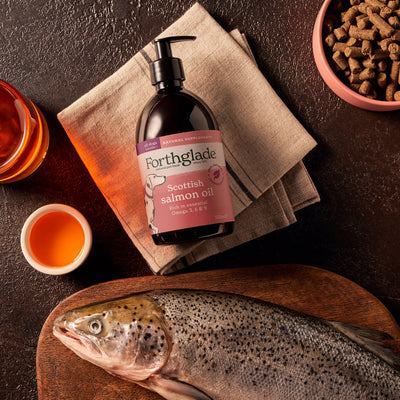


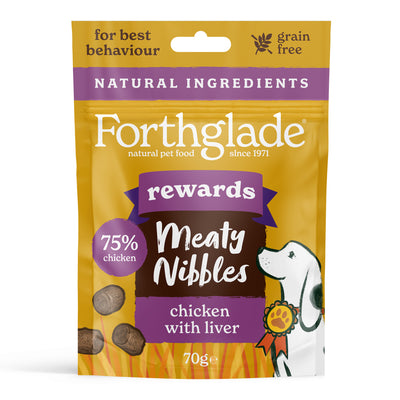







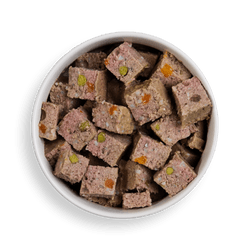

 Over 7,339 5* Reviews
Over 7,339 5* Reviews
 Established since 1971 - Made in Devon!
Established since 1971 - Made in Devon!
